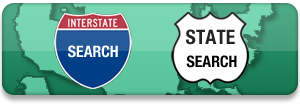During a time when many vacations are not possible, outdoor activities in road trip-accessible locations offer the ability to safely social distance. Hotels.com asked me to share my favorite activities and tips for exploring Yellowstone, so start here as you plan a safe and responsible vacation.
Located a full 50 miles away from the central hub (and congestion) of Yellowstone National Park‘s Old Faithful, the Canyon Village area of the park offers arguably the most dramatic scenery with fewer tourists to contend with. In this “Grand Canyon of Yellowstone”, families can view yellow-tinted cliffs and the Yellowstone River at its most active at both the Upper and Lower Falls.

The best hiking and waterfall viewing is found at Lower Falls, which can be viewed by car pull-out along the North Rim Drive at Lookout Point and Red Rock Point. (South Rim Drive takes you to the Upper Falls at Artist Point.) If you’re hiking instead, take the South Rim Trail (though be advised that it is one-way), or the Brink of the Lower Falls Trail. Both offer great views of Lower Falls, which is actually longer in height than Niagara Falls. We opted to hike just 1/2 mile along the South Rim Trail, turning down steep steps to view the falls from an overlook. The entire hike, including the hike back to the car and the overlook detour, was approximately 1.5 miles…just right for a quick after-lunch excursion. The entire trail is 2.5 miles, though one-way.
Be careful on all the overlooks and trails along the canyon with young kids. The way is often steep, and the drops are severe. We never felt unsafe, but we did require our adventurous kids to stay close by. Keep to the overlooks if series of steep stairs may be too much for little legs: the way is slow and long!
A good dining option near the falls is found at Canyon Village. Skip the often-crowded soda fountain and grille for the cafeteria.
Where to stay in and near Yellowstone:
Wondering about Yellowstone lodging? If you can get reservations well in advance (think 8-9 months out), a stay at the Old Faithful Inn is iconic (though often crowded). The Lake Yellowstone Hotel is another great option, or the park offers many cabin rentals in addition to campgrounds. You will need to reserve any and all of these well in advance. For an option away from the crowds, consider Harriman State Park, on the Idaho side. Its rustic yurts and bird sanctuary provide much-needed peace!

What else not to miss:
In addition to the falls, time spent in the Madison section of the park will offer great geothermal displays, though crowds will teem here due to its proximity to Old Faithful (only 16 miles away). Another less crowded option in the park is Fishing Bridge and the Sylvan Pass area near Yellowstone Lake: the vistas are made even more beautiful here due to the lack of tourists. In our experience, Yellowstone’s West Entrance tends to get the most crowded, while the East Entrance is nearly always empty. Granted, visitors entering here will have a long drive to reach the center of the park (over 30 miles), but the way is rugged and stunning in its remoteness (just keep an eye on when the Sylvan Pass opens each spring).
No matter where you head in the park, expect slow driving on park roads, and plan to stop a time or two for wildlife viewing. During our single day in the park, we stopped for buffalo twice, a bear once, and an osprey nest (with osprey).
As I disclose whenever applicable, we are partnering with Hotels.com to bring you this post on Yellowstone’s Grand Canyon.







 Downtown Spokane is pedestrian-friendly, and from the Holiday Inn and Suites, we were able to easily access Riverfront Park. The walk through the park is lovely, and takes visitors directly into the main downtown core. Here’s what we never miss in downtown Spokane:
Downtown Spokane is pedestrian-friendly, and from the Holiday Inn and Suites, we were able to easily access Riverfront Park. The walk through the park is lovely, and takes visitors directly into the main downtown core. Here’s what we never miss in downtown Spokane:



















































